WHAT TO DO
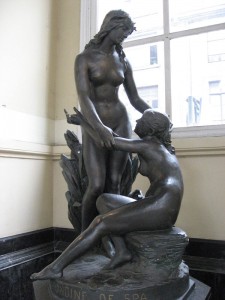
Statue of Ondine in the Pouhon Pierre-le-Grand
In the beginning (in a wooded valley of the Ardennes mountain chain in what is today eastern Belgium) water sprang forth from the earth. The water produced in the cluster of springs was far from ordinary. People believed it to be imbued with healing powers. Soon a village formed around the springs. Locals named the village “Spa,” some say as an acronym for the Latin “Sanitas Per Aquas” translating “health through water.”
Through the centuries, Spa’s fame spread.
Pliny the Elder wrote about the springs in the 1st century.
During the 14th, 15th, 16th and 17th centuries, European royalty (among them Henry VIII, Charles II and Peter the Great) visited.
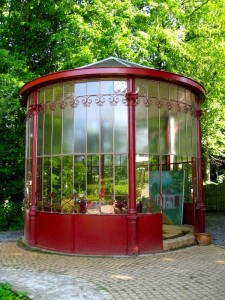
At the source.
A social scene developed. Luxury hotels were built to house the high and mighty. A casino was constructed to entertain them. And some savvy entrepreneur started bottling the water and selling it outside of Spa.
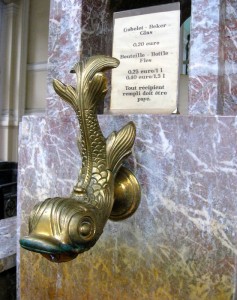
Taking the waters in Spa
By the 18th century, so many of the rich and famous flowed into Spa that the village earned the nickname “The Café of Europe.” In fact, Spa was so identified with healing waters, that happily ever after mineral springs and properties promoting health and wellness wear Spa’s name.
Today, Spa still attracts travelers. Some original buildings from the glory period still stand. The oldest casino in the world still operates. Spa’s water is still bottled and sold. And the main reason to visit Spa still remains the healing springs.
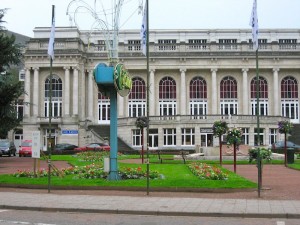
The world’s oldest casino
Twenty-first century visitors can enjoy Spa’s extraordinary water at les Thermes de Spa, a super-sleek water center/health-and-wellness treatment facility.
Located at the top of a hill overlooking the village, Thermes de Spa boasts dramatic indoor and outdoor thermal pools complete with bubble beds, massage jets and geysers. In addition, the facility devotes several floors to therapeutic and beauty treatments.
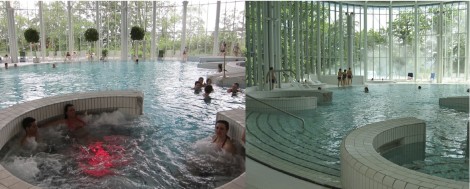
Indoor pool at Thermes de Spa
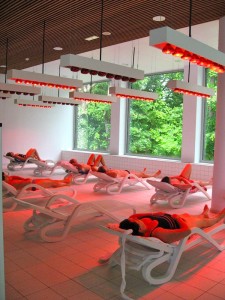
Relaxing area at Thermes de Spa
Thermes de Spa operates as a day spa, where a basic entrance fee (adults about $26 for three-hours and $42 for a full day) gives access to the dressing rooms, pools, saunas, relaxing areas and a café. The facility prices treatments, individually.
WHERE TO STAY
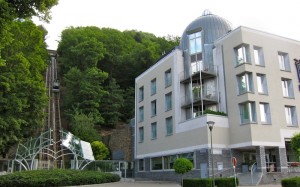
Radisson-Blu-Palace-Hotel
Book the Radisson Blu Palace Hotel in the center of Spa. Why? Because the first class, four-star hotel is virtually attached to the Thermes de Spa. Guest can not only take advantage of hotel-spa packages and/or spa discounts, but also use their hotel room keys (and wear hotel robes) to enter the private funicular ascending to the center of the spa facility.
The hotel’s location, clean-cut contemporary design, and accruements (restaurant, brasserie, bar, parking garage and fitness area) make it a good choice even for travelers not interested in the Thermes de Spa (can’t imagine).
WHERE TO EAT
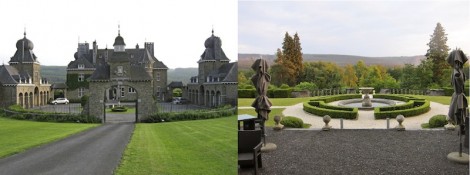
Front and back of Manoir de Lebioles
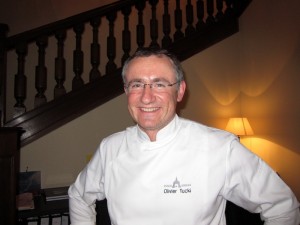
Chef Olivier Tucki
Reserve a table at Manoir de Lébioles, a castle hotel/restaurant/spa set in the midst of the Ardennes woods, about a 10-minute drive from the heart of Spa. Precede dinner with sunset cocktails on the terrace overlooking the graceful grounds and rolling hills rich with greenery, and then head to the romantic dining room where Chef Olivier Tucki serves what he describes as “regional, natural and delicate meals.” (We would add inventive and beautifully presented to the descriptors).
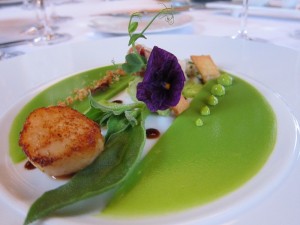
Scallop first course at Manoir de Lebioles
